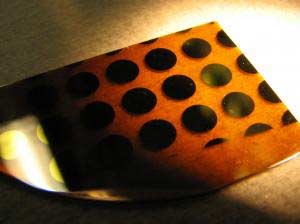Chemists at the University of California, San Diego have created a device that uses sunlight to transform harmful CO2 gas into fuel that could replace all the gasoline used in transportation.
Clifford Kubiak, professor of chemistry and biochemistry and Aaron Sathrum have developed a prototype device that can capture energy from the sun, convert it to electrical energy and “split” carbon dioxide into carbon monoxide (CO) and oxygen.
The amazing process produces CO (carbon monoxide) which can be processed by bacterial fermentation to produce ethanol, and massive amounts industrial chemicals used to produce plastics. By splitting CO2 you can save fuel, produce useful chemicals and eliminate global warming greenhouse gases.
The device designed by Kubiak and Sathrum to split carbon dioxide utilizes a semiconductor and two thin layers of catalysts. It splits carbon dioxide to generate carbon monoxide and oxygen in a three-step process. The first step is the capture of solar energy photons by the semiconductor. The second step is the conversion of optical energy into electrical energy by the semiconductor. The third step is the deployment of electrical energy to the catalysts. The catalysts convert carbon dioxide to carbon monoxide on one side of the device and to oxygen on the other side.
The US uses about 400 million gallon of gasoline a day and produces about 50 million tons of CO2. The goal now is to scale this process up to replace that amount of gasoline and convert most of the manmade CO2 gases in the US.

